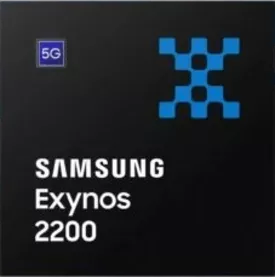Apple A16 Bionic vs Samsung Exynos 2200
SOURCE ARTICLES
Apple A16 Bionic: specs and benchmarks
nanoreview.net
The Apple A16 Bionic is a 6-core chipset manufactured using a 4-nanometer process technology. It has 2 cores Everest at 3460 MHz and 4 cores Sawtooth at 2020 MHz. In benchmarks, it scored 1438650 in AnTuTu 10 and 9874 in GeekBench 6. The GPU frequency is 1398 MHz with 128 shading units. It supports 5G, has a max camera resolution of 48MP, and can capture and playback 4K videos at 60FPS. It also supports Wi-Fi 6 and Bluetooth 5.3.
Latest Apple A16 Bionic GPU benchmarks confirm a disappointing generational performance jump
www.notebookcheck.net
The latest benchmarks for Apple's A16 Bionic GPU show disappointing performance compared to its predecessor and rivals. While it outperforms other tested SoCs in raw performance, it is less efficient than the Dimensity 9000 and Dimensity 8100. Compared to the Snapdragon 8+ Gen 1, the A16 Bionic is about 20% more powerful and 10% more efficient. It slightly outperforms the A15 Bionic in GPU tests but offers only a slight improvement in raw performance. iPhone 13 owners seeking better gaming performance may want to wait for the iPhone 15 series.
The Apple A16 Bionic shows how far phones have come in closing the processor gap
www.techradar.com
The Apple A16 Bionic processor has impressive specs, with 16 billion transistors and a 4nm node. It features a 5-core GPU and a 16-core neural engine, making it powerful for a mobile phone processor. However, it still lags behind desktop and laptop processors due to physical constraints. The A16 Bionic's performance gains are limited by its smaller size compared to desktop chips. In contrast, Apple's MacBook and iMac lineups are expected to have faster performance gains. The A16 Bionic could run older computers, but it would struggle to power a modern MacBook Pro. The A16 Bionic has a 6.7% increase in transistor density compared to the A15 Bionic, while the Apple M2 has a 25% increase over the M1. The gap between iPhone chips and MacBook chips is likely to widen in the future.
Apple’s A16 chip doesn’t live up to its ‘Pro’ price or expectations
The A16 chip in Apple's iPhone 14 Pro models is a minor evolution of the A15 chip, with only slight improvements in performance. It features a new display engine and LPDDR5 memory, but the overall architecture remains largely unchanged. The CPU performance shows gains of around 8-10%, while GPU performance benefits from the increased memory bandwidth. However, the A16 chip does not live up to its "Pro" price or expectations, and some argue that it should have been named A15+ or A15 Pro instead.
iPhone 14 Pro benchmarks — here’s how powerful A16 Bionic is
The iPhone 14 Pro and iPhone 14 Pro Max are powered by the new A16 Bionic chipset, which outperforms the competition in CPU and GPU benchmarks. The A16 Bionic is significantly ahead of Qualcomm's Snapdragon 8 Gen 1 and Google's Tensor chip. In terms of CPU power, the iPhone 14 Pro is the clear winner, even surpassing the A15 Bionic-powered iPhone 14. In graphics benchmarks, the A16 Bionic's 5-core GPU delivers impressive performance, outperforming the Snapdragon 8 Plus Gen 1 and the Galaxy S22 Ultra. In a video transcoding test, the iPhone 14 Pro performs exceptionally well, completing the task in just 26 seconds. Overall, the iPhone 14 Pro and iPhone 14 Pro Max are the fastest and most powerful phones available.
Apple A16 Bionic Processor - Benchmarks and Specs
The Apple A16 Bionic is a powerful processor found in the iPhone 14 Pro models. It offers 6 cores, with improvements made to the efficiency cores and memory bandwidth. The Neural Engine offers increased AI performance, while the integrated graphics engine benefits from higher memory bandwidth. The CPU performance shows small improvements compared to the previous generation, but still outperforms competitors. The chip is manufactured in a 4nm process and integrates nearly 16 billion transistors.
Apple A16 Bionic: All you need to know about the mobile chip
The Apple A16 Bionic chip is the latest mobile chip from Apple, featured in the iPhone 14 Pro and Pro Max. It is built on a 4nm architecture with 16 billion transistors, making it faster than the A15 chip. It boasts a 6-core CPU, a new neural engine, and an Advanced ISP for improved camera performance. Apple claims it is the most powerful smartphone chip, 40% faster than the competition. It will also be featured in the upcoming iPhone 15 and 15 Plus.
Samsung Exynos 2200: specs and benchmarks
The Samsung Exynos 2200 is an 8-core chipset manufactured using a 4-nanometer process technology. It has 1 core Cortex-X2 at 2800 MHz, 3 cores Cortex-A710 at 2520 MHz, and 4 cores Cortex-A510 at 1820 MHz. In benchmarks, it scored 1125312 in AnTuTu 10, 6873 in 3DMark Wild Life Performance, and had a stability of 64%. It has a Samsung Xclipse 920 GPU with a frequency of 1306 MHz and 640 shading units. It supports LPDDR5 memory, UFS 3.1 storage, and has a max camera resolution of 200MP. It also supports 5G with download speeds up to 7350 Mbps.
Benchmarks indicate the Samsung Galaxy S23 FE's Exynos 2200 is more powerful than the Galaxy S22 series'
The Samsung Galaxy S23 FE's Exynos 2200 chipset outperforms the Galaxy S22 series, with a 15% increase in performance on Geekbench and improvements on AnTuTu benchmarks. However, both the S23 FE and S22 Ultra struggle with sustained performance under load, with the S23 FE performing slightly better.
+ 6
AI COMPARISON
Product Comparison: Apple A16 Bionic VS Samsung Exynos 2200
| Feature | Apple A16 Bionic | Samsung Exynos 2200 |
|---|---|---|
| Total Clock Speed | 15 GHz | 18.48 GHz |
| RAM Speed | 6400 MHz | 3200 MHz |
| Semiconductor Size | 4 nm | 4 nm |
| GPU Clock Speed | 1398 MHz | 1300 MHz |
| Max Memory Size | 6GB | 24GB |
| DDR Version | 5 | 5 |
| Geekbench 5 Single Score | 1874 | 1108 |
| Geekbench 5 Multi Score | 5382 | 3516 |
| 64-bit Support | Yes | Yes |
| Integrated Graphics | Yes | Yes |
| 5G Support | Yes | Yes |
| DirectX Version | None | 12 |
| L2 Cache | 24 MB | None specified |
| Transistors | 16000 million | Not specified |
| Shading Units | 128 | 640 |
| CPU Threads | 6 threads | 8 threads |
| Big.LITTLE | Yes | Yes |
| LTE on SoC | Yes | Yes |
Summary
- Performance: The Apple A16 Bionic demonstrates superior performance in terms of Geekbench single and multi-core scores compared to the Samsung Exynos 2200. It also has a faster RAM speed, which contributes to its higher performance metrics.
- GPU and Memory: Although the A16 Bionic has a slightly faster GPU clock speed, the Exynos 2200 compensates with a much larger maximum memory capacity of 24GB compared to the A16 Bionic’s 6GB. Additionally, Samsung’s Exynos 2200 has more shading units, which may benefit graphical processing.
- Connectivity and Support: Both chipsets support 5G, with integrated graphics and similar advanced connectivity options. However, the Exynos 2200 supports a higher version of DirectX, suggesting better compatibility with some types of graphical content.
- Technological Edge: The A16 Bionic uses advanced technology with a significantly higher number of transistors, indicating potentially more processing power packed into the chip. Both are manufactured using a 4nm process, ensuring modern efficiency.
Recommendations
- For Power Users: Users looking for the highest performance, especially in high-end mobile gaming or professional applications on mobile platforms, might prefer the Apple A16 Bionic due to its superior processing power and higher RAM speed.
- For Multimedia Enthusiasts: Those who prioritize high-resolution video playback and advanced multimedia capabilities might lean towards the Samsung Exynos 2200 for its larger memory capacity and robust GPU capabilities.
- For Future-proofing: Users considering future compatibility, especially with new graphics-intensive applications and VR, might find the Exynos 2200’s support for DirectX 12 a critical factor.
- General Users: Everyday users who prioritize efficient performance for daily tasks will find either chipset capable, but the A16 Bionic’s balance of power efficiency and raw performance might be more appealing.
PRICES
ASK AI
BestVs.ai
Hello, I'm your AI shopping assistant. How can I help you?
AI can make mistakes. Consider checking important information.


